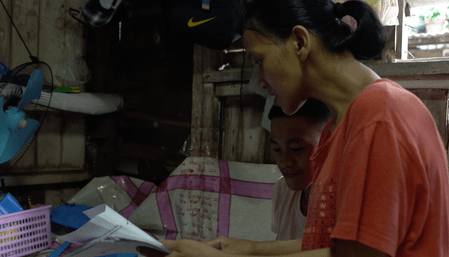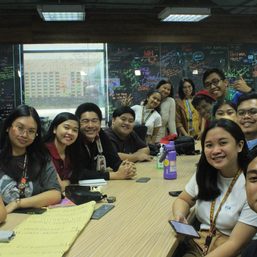SUMMARY
This is AI generated summarization, which may have errors. For context, always refer to the full article.
![[OPINION] What I learned after 5 months of teaching online](https://www.rappler.com/tachyon/2021/03/ispeak-how-to-teach-online.jpg)
After almost five months of being a professor at the Polytechnic University of the Philippines Open University (PUP-OU), here are five pointers for fellow teachers based on my personal experience teaching online.
1. Keep it simple
Since not all students have access to the best technology, I decided to keep my approach simple and used a Facebook group as my learning management system. It’s free, readily accessible, and not intimidating. I even asked my students to create the group themselves so they could easily add their classmates. They just made me an administrator. When I finally had control of the group page, I reclassified it under “social learning” so I could add content by units.
2. Earn your students’ trust first
I never required attendance to my class. I told my students that they may or may not attend it, and it would not matter. But I told them that for those who would care to attend, I promise to make each session worth their while.
I painstakingly designed every session as digital experience in itself. I had a classroom as my virtual background, I played music while waiting for the class to start, and planned the experience in a way that it would start and end on time.
In designing the experience, I did my homework. I read somewhere that for my students to be interested in what I can teach them, I had to earn their trust first. And for me to do that, I had to be interested in them first.
So, our first session and first assignment was for the students to tell me about themselves: what makes them laugh, what makes them cry, etc. I wanted to know them and establish a personal connection with them based on mutual trust before I could even attempt to teach them.
And you know what happened? My classes were all packed. Students were all present. Even if we didn’t have breaks during the sessions, they always stayed till the end.
3. Have a clear map, but be ready for detours
From the very beginning, I told my students that our subject would be a four-month journey, and I showed them a virtual map of where we would go and how we could get there. They knew early all the requirements they would have to complete, and how they would be graded.
But along the way, unexpected things happened. A typhoon came and flooded parts of Rizal and Metro Manila. Classes were suspended. Thus, we had to take detours and adjust the journey based on the situation.
Fortunately, the PUP leadership recognized these challenges and made allowances, making it easy for all of us to cope with the changes.
4. Communicate, communicate, communicate
Synchronous sessions, where I meet with the class online, happen only once a month. The rest of the weeks, our classes are asynchronous, and I just provide my students with things to read, watch, or listen to, or questions to reflect on and answer.
Since synchrounous sessions have a fixed schedule, I would already send an email to all my students way ahead to provide them with an advance copy of our agenda for the coming session. I would also post an announcement on our Facebook page days before the class. It is also there that I provide them with the Zoom link for the session.
On the day of the class, I send another reminder and include the Zoom link once more. After the class, I would email them the slides that we used in the session as well as the link to our Zoom recording so they could review our discussion. I do this for every session. And I always remind my students to send me an email or private message for any questions or clarifications.
Why do I need to do all these? I want to increase my chances of success. The playwright George Bernard Shaw once said that the biggest problem with communication is the illusion that it has taken place. So I never assume that I have already communicated with my students. I repeat my message. I send it again through another way, another format. By doing this, I have a better chance of getting through the noise and reaching my audience.
5. Have fun, be yourself, and trust God
My bosses at PUP-OU gave me free range to develop my syllabus, and to choose my own learning materials. So, I chose the ones that I personally liked and enjoyed. I shared with my students videos and audiobooks that inspired me. I even shared with them movies and TV series in Netflix related to our lessons. And more than these, I showed them that I am a human being who does not know everything.
For example, in the beginning, I had a hard time operating Zoom. So I asked my students for help. Many of them already knew how to “co-host,” so I allowed them to help me. And they were more than willing to do so. In the end, I learned from my students just as much as they learned from me.
Now that we are about to end the semester, my students have been sending me thank you notes for all the things they learned. I can only praise God for this privilege. It was He who made this possible. Indeed, without Him I can do nothing. My prayer now is for our loving God to bless my small effort of planting seeds in the hearts of my students, and turn those seeds into trees that would eventually bear fruits for His greater honor and glory. – Rappler.com
Junephrey Ocampo is a former journalist and now president of Rightmedia Public Relations. He teaches Broadcast Institution Management at the Polytechnic University of the Philippines Open University.
Add a comment
How does this make you feel?

![[Time Trowel] Mentorship matters](https://www.rappler.com/tachyon/2024/04/mentorship-matters.jpg?resize=257%2C257&crop_strategy=attention)
![[OPINION] Education for life: Weaving ethics in all subject areas](https://www.rappler.com/tachyon/2024/03/Education-for-Life-Weaving-Ethics-in-All-Subject-Domains.jpg?resize=257%2C257&crop_strategy=attention)
![[OPINION] Limited intake of international students: Is Canada knee-capping its future?](https://www.rappler.com/tachyon/2024/02/tl-canada-forgeign-student-cap-02232024-2.jpg?resize=257%2C257&crop_strategy=attention)

![[Rappler Investigates] Who’s fooling who?](https://www.rappler.com/tachyon/2024/02/rodrigo-sara-duterte-2019.jpeg?resize=257%2C257&crop=167px%2C0px%2C900px%2C900px)






![[OPINION] Moving beyond blaming teachers: The call for regulatory deregulation](https://www.rappler.com/tachyon/2024/02/Moving-Beyond-Blaming-Teachers-The-Call-for-Regulatory-Deregulation.jpg?resize=257%2C257&crop=262px%2C0px%2C720px%2C720px)


There are no comments yet. Add your comment to start the conversation.